
NewScientist just published a quick overview of a number of new technologies that show promise for solving a number of modern problems not through Chemistry or Nanotechnology, but through genetically engineering bacteria. One of the most intriguing new developments mentioned is a type of enzyme produced by bacteria that can release hydrogen atoms from water molecules in the right chemical environment, producing hydrogen gas. Enzymes produced from bacteria could also help replace expensive platinum catalysts in hydrogen fuel cells, making the cells smaller in the process. While these enzymes are currently more expensive than platinum, their price is expected to drop over time while the price of platinum, which is already in high demand, should remain high. The article also goes on to describe bacteria that can digest certain types of recycled plastic, converting it into more useful polymers.
Full article here
Image via flickr
Friday, March 27, 2009
And The Future Will Be Soft and Moist.
Posted by
Jim
at
4:19 PM
0
comments
![]()
Thursday, March 26, 2009
strippers earn more tips when most fertile

A study headed by Geoffrey Miller in 2007 demonstrates a connection between the ovulation cycle of strippers and the amount of tips earned.
"Normally cycling participants earned about US$335 per 5-h shift during estrus, US$260 per shift during the luteal phase, and US$185 per shift during menstruation. By contrast, participants using contraceptive pills showed no estrous earnings peak."idea via Discover, "What Can Strippers Tell Us About Evolution"
actual study available here
photo via flickr
Posted by
Jim
at
5:06 PM
1 comments
![]()
Monday, September 24, 2007
"If Jesus returns tonight, who will save your pets tomorrow?"
"Many Christians believe that animals do not go to heaven. So when Jesus comes back and you return with him to heaven, will there be somebody to take care of your dog or cat?" "If you have a non-Christian family member, they might take care of your pet, but if not, have you made any plans? Imagine being taken to streets of gold while your dog starves to death walking around in his own feces trapped in your small house or apartment, subject to fire and earthquakes or even being eaten by heathens searching for any remaining morsel of food. Do you want that to happen?" "With the imminent collapse of the global economy and rampant godlessness, even the community shelters will not have the resources to care for your poor, hungry animals. So you need to make preparations." "That’s what JesusPets is for. We are assembling a community of heathen pet-lovers to care for pets that are “left-behind.” We are coordinating with feed mills and kennels in preparation for your post-apocalyptic pet care needs." "Who is going to care for your pets after you are raptured into heaven?"
"Who is going to care for your pets after you are raptured into heaven?"
Posted by
Jim
at
9:29 PM
0
comments
![]()
Labels: apocalypse, humor, jesus, jesuspets, jesuspets.com, petistic, pets
Wednesday, July 05, 2006
TV in Japan

You can watch knock-off Japanese Spiderman, Johnny Depp getting interviewed by a female Willy Wonka, naked asian people playing Mah-Jong, lingerie models trying to sit in scalding water, and japanese rap videos, all on the same site. Possibly the most continually entertaining blog ever.
TV in Japan
Posted by
Jim
at
9:12 PM
1 comments
![]()
Tuesday, May 23, 2006
Poseidon
Poseidon sat at his desk, going over the accounts. The administration of all the waters gave him endless work. He could have had as many assistants as he wanted, and indeed he had quite a number, but since he took his job very seriously he insisted on going through all the accounts again himself, and so his assistants were of little help to him. It cannot be said that he enjoyed the work; he carried it out simply because it was assigned to him; indeed he had frequently applied for what he called more cheerful work, but whenever various suggestions were put to him it turned out that nothing suited him so well as his present employment. Needless to say, it was very difficult to find him another job. After all, he could not possibly be put in charge of one particular ocean. Quite apart from the fact that in this case the work involved would not be less, only more petty, the great Poseidon could hold only a superior position. And when he was offered a post unrelated to the waters, the very idea made him feel sick, his divine breath came short and his brazen chest began to heave. As a matter of fact, no one took his troubles very seriously; when a mighty man complains one must pretend to yield, however hopeless the case may seem. No one ever really considered relieving Poseidon of his position; he had been destined to be God of the Seas since time immemorial, and that was how it had to remain.
What annoyed him most - and this was the chief cause of discontent with his job - was to learn of the rumors that were circulating about him; for instance, that he was constantly cruising through the waves with his trident. Instead of which here he was sitting in the depths of the world's ocean endlessly going over the accounts, an occasional journey to Jupiter being the only interruption of the monotony, a journey moreover from which he invariably returned in a furious temper. As a result he has hardly seen the oceans, save fleetingly during his hasty ascent to Olympus, and had never really sailed upon them. He used to say that he was postponing this until the end of the world, for then there might come a quiet moment when, just before the end and having gone through the last account, he could still make a quick little tour." Poseidon, by Franz Kafka
Posted by
Jim
at
3:22 AM
0
comments
![]()
Tuesday, April 18, 2006
Wednesday, April 05, 2006
someone is a genius

For the moment, if you go to google and type the word "failure" as the search phrase, and click "I'm feeling lucky" (to bring up the first search hit result), you get redirected the White House web page for George W. Bush.
Posted by
Jim
at
10:52 PM
1 comments
![]()
Monday, April 03, 2006
genetically engineering myth creatures for fantasy pets

GeneDupe is a company in the business of genetically engineered luxury pets. They start out with a search image of a mythological creature (right now, dragons, unicorns and gryphons), and the living creature that most closely resembles the mythological creature (lizards for dragons, horses for unicorns, and the spliced genomes of a lion and an eagle for the gryphon). From there, by using computer simulations, the computer goes through a series of random mutations, breeding simulated embryos and selecting for the new mutation that most closely resembles the virtual creature. They have successfully designed, in theory, the genetics of multiple imaginary creatures from popular mythology. The next step for the company, which they are just beginning, is to take it into the real world for testing.
Combining the genetic traits from two different animals into a third is nothing new. Everyone has heard of the rabbit Alba (see wire article "I Love My Glow Bunny"), which had jellyfish genes spliced in to make its eyes, whiskers and fur glow green under fluorescent light. Scientists have also tinkered with designing human-animal chimeras, combining the DNA of humans with animal dna, and allowing the cells to survive for a few days in a petri dish before destroying it (see my previous article, mad geneticists create human monsters; chimeras a reality).
idea via future feeder
source article, "Here be dragons" at Economist.com
Posted by
Jim
at
3:01 AM
1 comments
![]()
new brain chip can connect to thousands of neurons, send signals back to hundreds
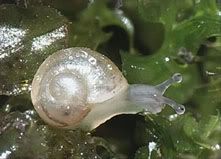
One small step towards mind control and cyborgs.
The mobile chip maker Infineon, working with a team from Italy and Germany, has developed a chip that can read signals from up to 16,328 mammalian brain cells, and send signals back to several hundred of them. The scientists tested the chip on snails, due to the simplicity of the cells, and tinkered with the genetics of the organisms to get the combination to work even better. In order to get neurons to attach to the circuit, the researchers had to develop a "neural glue" using a protein from the brain which glues connections together and also attracts sodium pores.
source article at new scientist
Posted by
Jim
at
2:40 AM
0
comments
![]()
Monday, March 27, 2006
photographing every object used in a lifetime

Alberto Frigo, Professor in the Art and Technology Department at the Gothenburg University, has singlehandedly undertaken the task of photographing every object that he uses for the rest of his life. The rules of engagement are as follows:
1. During a life-event every object (every artifact that is graspable, consistent and independent) the dominant-hand uses is photographed once and while used.
2. If an object of the same type is the following to be used, this object is not photographed unless the life-event changes.
3. A life-event changes as soon as the dominant-hand uses a different object in a different space.
You can view his archive of photos and read more at his website. Photos are organized by date and by type of object used. You start out on the current day, and by clicking on an object you view a large paneling of every time in his recorded history that type of object was used. You can then click on a specific photo, and travel through time to view all of the objects he used during that same day. He also looks slightly like Amelie's boyfriend.
idea via pasta and vinegar
Posted by
Jim
at
3:18 AM
0
comments
![]()
make something new
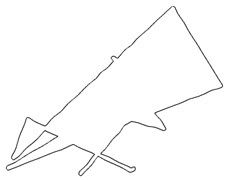
"draw-something is a program that generates original drawings. It does so by generating a simple random polyline scribble then drawing around that using a simple maze-running algorithm."
idea via future feeder
Posted by
Jim
at
3:03 AM
0
comments
![]()
Sunday, February 26, 2006
thoughts watched and willed away - controlling pain

A study by Stanford Researchers together with the MRI technology company Omneuron demonstrates that patients can lessen their pain greatly by looking at a real-time fMRI neuro-imaging scan of the rostral anterior cingulate cortex in their brain, which is closely related to pain. By experimenting with different techniques while able to visualize the results directly, patients were able to play a sort of hot and cold game to learn what works best, decreasing total pain by an average of 64%. By learning the basic techniques from working with the machine, researchers hope that people can learn to strengthen the neural circuits responsible for lessening pain while outside of the lab.
source article from wired news
study available at the stanford web site
Posted by
Jim
at
8:39 PM
0
comments
![]()
Colombian artist Catalina Estrada

visit her web site
idea via boingboing


Posted by
Jim
at
8:22 PM
1 comments
![]()
Sunday, February 19, 2006
"Baby Cages keep me safe from my pit bull puppy doggy."

Remember Bonzai Kittens? Welcome Babycage.net.
The top-rated greek news channel, Alpha TV, recently bit the bait, falling for one of the most obvious new internet hoaxes, babycage.net. Expressing public disgust and outrage, Alpha TV referred to it as another instance of "American self-indulgence" and a step towards a new-Orwellian society.
Babycage, spoofing the American tendency to keep children on leashes, go one step farther, offering a number of child-containment facilities, including the baby escort (above), the teenager cage, and the multi-baby cage.

idea via metafilter
Posted by
Jim
at
6:20 PM
0
comments
![]()
Saturday, February 18, 2006
video collage of tunnel accidents set to dance music: biting postmodern media critique or perverse adolescent expression?

David Pescovitz recently posted this link on boing-boing, remarking that there was something "uncomfortably engaging" about the video. The video reflects a sort of naturalization of terror, the way in which a lethal event on the news will be surpassed minutes later by gum commercials, pop music, and reality television. Reflecting our virtual obsessions with reproducing reality, the real itch we can't scratch is the dim awareness of total falsity that normal television brings, causing the voyeuristic mas(s)ochist masses to demand entertainment that presses closer to the reality we feel is denied us. The unsettling part of watching people dying in tunnel accidents to dance music is the eerie way in which it doesn't feel unnatural at all, but just an everyday television experience.
watch video here
idea via boing boing
Posted by
Jim
at
5:01 PM
0
comments
![]()
Thursday, February 16, 2006
The Hall of Best Knowledge

The Hall of Best Knowledge is a weekly comic panel done by Ray Fenwick in Halifax. The first 35 panels are up for viewing on his Flickr collection.
via Drawn!
Posted by
Jim
at
3:47 PM
0
comments
![]()
Monday, February 13, 2006
Nazi swing music from the 30's

For the novelty obsessed, WFMU's Beware of the Blog has posted a collection of Nazi swing music from the 1930's by a band called Charlie and His Orchestra. The band was led by a man named Karl Swendler, who broadcast Nazi-themed big band and swing hits every night throughout the 1930's to Canada, the U.S. and Great Britain.
Along with the collection of MP3's, they have a link to a cogent and interesting article on the purpose of propaganda by the same man. If you weren't aware that he was pure evil you might actually agree with him. The Nazi's are not mentioned by name very often throughout the article, and it is surprisingly lucid.
Travel here
Posted by
Jim
at
9:05 PM
0
comments
![]()
Sunday, February 12, 2006
One step closer to immortality: Klotho gene may increase human life span by 30%

Scientists in the United States have discovered a gene in mice, named Klotho after a Greek goddess who spins life's thread, that extends their lifespan by about 30%. There is a similar gene in humans, that if activated through gene therapy could have similar results for us. The mice in the new experiments tended to be less fertile, and the gene may also predispose people to diabetes. The miracle of the gene seems to work through reducing oxidative stress, a key cause of ageing, and the gene tends to delay many of the effects of old age, such as the weakening of bones, clogging of arteries, and loss of muscle fitness.
source articles at BBC NEWS and ScienCentral
Posted by
Jim
at
6:44 PM
0
comments
![]()
Sunday, September 11, 2005
behold! bee dogs

YES. a website dedicated to dogs dressed like bees - here!
Posted by
Jim
at
6:34 PM
4
comments
![]()
Wednesday, August 17, 2005
the naming of the tenth planet

So there might be a tenth planet. I'd already heard about it, and forgotten it. To be quite honest I thought they had already discovered a tenth planet a while ago, but I guess they hadn't. Right now astronomers are getting together and arguing about just what a "planet" is. Isn't a planet just something big that orbits the sun?
Well, New Scientist put together a poll of their readers to find out what people would name the new planet, if it really is a planet after all. And like all polls of the general public, the results are embarrassingly funny.
The first choice is pretty good. Persephone. In roman mythology Pluto kidnapped Persephone. So there's... well, there's sort of a connection.
Second choice: Peace. (or Pax, which means peace). Since, you know, peace is good.
Three: Galileo. He had something to do with space, right?
Four (my personal favorite): Xena. Hahaha. As in the warrior princess. "What?- It's got an X in it, right? That's spacy." Apparently this was the name Mike Brown and his team originally gave the planet upon first discovering it, as a joke - and it's starting to stick.
Five: Rupert. This one is good. In Hitchhiker's Guide to the Galaxy, the fourth planet was officially called "Persephone," but was widely nicknamed Rupert after "some astronomer's parrot - there was some tediously heart-warming story attached to this - and that was all very wonderful and lovely.”
Six: Bob. Since astronomers could have something to laugh about.
Seven: Titan. A popular choice, even though it's already a giant moon around Saturn.
Eight: Nibiru. Has something to do with ancient babylonian or sumerian tablets or something referring to a tenth planet. Some people think the writings have finally come true.
Nine: Cerberus. Mythological, kind of tough.
Ten: Loki. More mythology.
Also, the editor's favorite was a six year old who wrote in recommending the name R2D2.
Posted by
Jim
at
2:16 AM
2
comments
![]()
where will you be when the world is over?
global warming in the siberian peat bogs

I'm just kidding around about the title. Sort of. Well, just don't have kids anyway. Unless, you want them to breath in the 700 million tons of extra methane released every year for the next hundred years from the Siberian peat bogs melting. Now, what are the Siberian peat bogs, you ask? Well, to start off, they're the size of Germany and France combined. And them being frozen is what keeps all of the methane gas in. But... scientists just found out that they have actually been thawing over the past 3 or 4 years, due to other global warming. It seems that this was one of those "off-chance" scenarios, one of those things that wasn't really in some predictions of how we'd affect global warming, since a lot of estimates only took into account the gas leaks that were already known and accounted for, not contingencies and "tipping points" we'd reach, things that were less predictable.
So, methane - who cares? It can't be that bad. Humans make it and cows make it, right?
Well, It's 20 times more potent as a greenhouse gas than Carbon Dioxide. If the peat bogs melt, then the amount of methane in the atmosphere over the next 100 years or so will double because of this. Greenhouse scientists let out a collective "oh sh*t" about this, and global warming predictions will now have to be ramped up from former predictions because of this. The extra methane is expected to raise the amount of global warming by 10-25%, according to climate scientists at the Met Office's Hadley Centre.
"It is a scenario climate scientists have feared since first identifying "tipping points" - delicate thresholds where a slight rise in the Earth's temperature can cause a dramatic change in the environment that itself triggers a far greater increase in global temperatures."full article at the guardian
Posted by
Jim
at
1:24 AM
0
comments
![]()
Thursday, August 11, 2005
how to control people by remote-control

Yes, it's true. You can finally control the world (or make your friends look like fools) by remote control.
"By remotely stimulating a person's vestibular system - the fluid-filled tubes in the inner ear that guide their sense of balance - with electrodes placed on the skin just below the ear, researchers at NTT's research laboratories in Kanagawa have found a way to turn humans into oversized radio controlled vehicles."Demonstrated at this year's Siggraph Cyber Fashion Show, participants would suddenly veer to the right or the left, depending on which direction the controller wanted to unbalance them. Japanese researchers hope to harness the technology, called "galvanic vestibular stimulation" (GVS for short) for computer gaming. Imagine sitting in the car seat of the newest Japanese racing game, and feeling your sense of gravity shift directions right along with the gameplay as you hug the turns of the race track.
source article from New Scientist
Posted by
Jim
at
5:34 AM
0
comments
![]()
algae love: sex and stress in the algae world
People who spend all of their time researching the sex lives of various types of algae remind me a bit of morticians. Whenever I meet aspiring forensics scientists, what I'm usually taken by is their lack of weirdness. It's almost as if they simply wanted a profession where they could finally get a little bit of peace and quiet.
Working in the dark heart of an algae laboratory at the University of New Brunswick sits Aurora Nedelcu, a scientist who has just uncovered a little known curiosity of the world. Aurora discovered that the two types of algae she studied both seemed to have sex in response to stresses in their environment. Volvox carteri got worked up over oxidative stress or heat stress, while for Chlamydomonas reinhardtii it was nitrogen stress that did it in. Why this is important to us (i.m.o.) is that it uncovers for us an interesting evolutionary strategy of the world. When an organism's survival is threatened in some way, that's when they need to reproduce. For humans, perhaps, when we're facing insecure times that might be when we need someone the most.
source article at newscientist
Posted by
Jim
at
4:47 AM
0
comments
![]()
Tuesday, August 09, 2005
too much coffee
"S. Korean man dies after 50 hours of computer games"The games were reportedly online battle simulation games, which the man had recently quit his job to allow more time for.
"A South Korean man who played computer games for 50 hours almost non-stop died of heart failure minutes after finishing his mammoth session in an Internet cafe, authorities said Tuesday."
full article at boston.com business
idea via relevant history
Posted by
Jim
at
6:08 PM
0
comments
![]()
the adventures of art lad
"A lot of people liked this picture a lot when my Dad put it up. Do you know what it is?"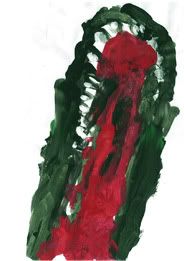
"I'll tell you. It's a T-rex coming down to bite you up! See the teeth?"
The above artwork and excerpt is from "The Adventures of Art Lad" which is seriously the coolest blog by a 6-year old ever. His Dad helps him with it, his name is Thomas, and he loves dinosaurs.
idea via eyebeam reblog
Posted by
Jim
at
1:43 AM
0
comments
![]()
Monday, August 08, 2005
the art of creating a frankenjacket, or: a new vegetarian ethics
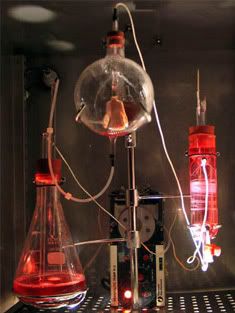
When I was a vegan, I spent a lot of time thinking about what was okay for me, as a caring member of the vegan society, to eat. For instance - shrimp. They don't really have brains, do they? And some vegans don't eat honey, because you have to agitate all those bees. But even if you care about bees, they make too much of the stuff anyway, and none of them get hurt, right? Well, now what if the animals we eat were never hurt by us eating their meat? It all makes my head hurt.
Here is the vegetarian dilemma of the 21st century - is it okay to wear leather or eat meat if it was created by taking a small pinch of cells from the animal and regrowing them in a lab over polymers unattached to the animal?
Oron Catts and Ionat Zurr at the Tissue Culture and Art Project are attempting to grow a semi-living jacket out of living mouse skin cells and human bone cells in preliminary experiments to create a victim-free leather. The jacket is being grown in a specially designed bioreactor that acts as a kind of surrogate body for the cells. Since the tissues are given a proper nutritional environment, they keep growing, just as if they were still on their host bodies. While the zombie jacket is currently only a creepy 2 inches high and 1.4 inches wide, designs for larger jackets are already underway.
The new victim-free jacket is part of the group's hopes to eventually live in a "victim-free utopia," a world where our clothing and food no longer has to come about by harming the animals that we eat and use, a world where meat is grown detached from anything that can think or feel pain. Despite being creepy on a whole nother level from traditional meat, how can we really argue with the ethics of such an idea when animals live in such horrible conditions?
Source article from Wired news
Posted by
Jim
at
4:03 AM
0
comments
![]()
Sunday, August 07, 2005
graham crackers for your walls

If you want your walls to stand out this fall, try Promise Design's Phytoslim modular wall panel system that allows plant enthusiasts to literally bring their walls to life. The frame is composed of a plastic endoskeleton combined with coconut fibers, allowing bonzai-flavored plants to dig their roots in and really grow on your walls.
Also from the promise design website is the "Slice of Heaven" vase (20x20x20cm) allowing all those sweet butchered flowers your hubby gave you to look like they really are still alive, growing in real time on your table top.
idea via josh rubin's cool huntin
Posted by
Jim
at
6:54 PM
0
comments
![]()
the siggraph cyber fashion show

When we create visions of the future, we delineate potentials that seem interesting in the present while appearing possible in the future. How these visions play out in history is a different matter, and when we look back now on the visions of how-the-world-would-be after the year 2000, we are either surprised by how commonplace the technologies have become in our lives, or laugh at how strange these ideas once were.
One of this year's playgrounds for futuristic ideas was at the fourth annual Siggraph Cyber Fashion Show. Included in the highlights of this year's show was Sara Diamond, Di Mainstone and the Am-I-Able design team's "Company Keeper," (photo above) a garment that senses the body wearer's mood by recognized movement patterns and the types of noise in their surrounding environment, and responds by playing appropriate soundscapes to sooth the user's mood. This could eventually turn into a kind of "smart shuffle" that doesn't choose song's randomly, but quasi-randomly based on what the user might enjoy based on their current emotions.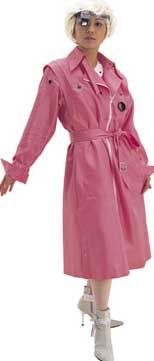
Other highlights that caught my eye include design group WIN's Report-the-World trench coat, which includes 10 embedded cameras for a clandestine 360-degree view of the surroundings, a head mounted pirate patch-like view screen to see what is happening around them, and a dial to rotate the eye patch between the different cameras. Wait, isn't this from a William Gibson novel?
source articles at wired (includes a nice gallery and more extensive reporting) and we-make-money-not-art (the company keeper entry and report-the-world entry)
Posted by
Jim
at
5:46 AM
0
comments
![]()
Saturday, August 06, 2005
cocaine traces in italian river suggest vast cocaine usage

Scientists in Italy have applied an inventive way to test cocaine use in the regions washing into Italy's large Po River. The river serves as the waste basin for 5 million people, allowing the drugs to trickle through the bloodstream, out the user's urine, and into the labs of scientists. What is interesting about the study is that it suggests that cocaine use in the region is actually 80 times higher than the officially released estimate of drug use collected through surveys, medical records and crime statistics. If this is true in Italy, perhaps the world has a much larger drug problem than statisticians suspect.
source article from new scientist
Posted by
Jim
at
4:05 AM
1 comments
![]()
a new friend

also, an impromptu poll : who would like the site's name changed to hypergloss and redesigned? or, should i stick with lemons and space and redesign anyway? leave comments!
love,
jim!
Posted by
Jim
at
3:05 AM
1 comments
![]()



